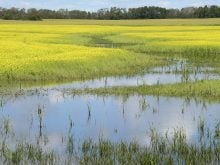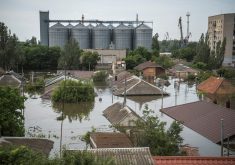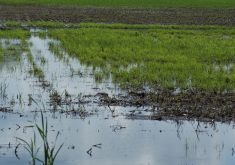Tractors and seeders won’t be rolling across fields in western Manitoba for the next four to five weeks.
But producers and provincial extension agents say water is flowing off cropland and most fields should be ready for spring seeding in early to mid-May.
The situation is looking more positive than it did in the first week of March, after a blizzard walloped Westman and eastern Saskatchewan. The storm closed the Trans-Canada Highway for about three days and snow drifts engulfed half-ton trucks parked in farmyards.
Read Also

Volatile temperatures expected for this winter
DTN is forecasting a lot of temperature variability in the Canadian Prairies this winter. Precipitation should be close to average.
Many producers thought the snow would stick around well into April.
Check out our “live blog” where you will find the latest updates on Prairie flooding.
“After that snow in March, everybody was going, ‘oh my gosh, how are we going to get rid of all this stuff,’ ” said Lionel Kaskiw, Manitoba Agriculture farm production adviser in Souris.
But the snow did melt and water is moving off the land, so producers are feeling more hopeful, Kaskiw added.
“I don’t think the concern is as big anymore. We’re just at the beginning of April…. I think guys are gearing up for beginning of May seeding (around Souris).”
The situation isn’t as positive south of Souris. Scott Chalmers, Manitoba Agriculture diversification specialist in Melita, said farmland in the area is “soaking wet.”
Nonetheless, if the weather in April is decent most producers in the Melita region should be on the land by the second week of May.
Chalmers is concerned that the spring melt will wash out roads and a number of farmers could be cut off from their land.
“There’s a good chance that 80 percent of the crop will be in without too much hassle,” he said. “But there’s still 20 percent (that’s uncertain).”
North of the Trans-Canada Highway, near Shoal Lake, Bill Nicholson is also worried about access to land. Certain fields could be difficult to get to, or it might take 20 minutes rather than five minutes to get there by tractor.
“You can see the field half a mile away, but it’s five miles to get there by a more circuitous route.”
Nicholson said snow banks are still visible in the tree lines, fence lines and near sloughs around Shoal Lake, and water is ponding on many fields.
“We’re probably looking at the first week of May, of the possibility of doing anything. Assuming things go well from here.”
Contact robert.arnason@producer.com
















